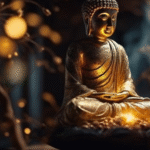Bhutan, the enchanting Himalayan kingdom, is often described as the last Shangri-La – a land where spirituality breathes through every valley, mountain, and monastery. Known for measuring its progress through Gross National Happiness rather than material wealth, Bhutan offers an experience unlike anywhere else in the world. For spiritual seekers, cultural explorers, and travelers searching for meaning, a Bhutan Buddhist Cultural Tour is not just a vacation – it’s a journey into timeless wisdom, peaceful living, and the teachings of the Buddha that continue to guide the nation’s soul.
In this blog, we’ll explore the highlights, experiences, and significance of a Bhutan Buddhist Cultural Tour, giving you a complete insight into why this mystical country is the ultimate destination for cultural and spiritual travel.
Why Choose Bhutan for a Buddhist Cultural Tour?
Bhutan is often called the “Land of the Thunder Dragon”, but it could just as easily be called the “Land of Living Buddhism.” Unlike many destinations where Buddhism exists only in temples or texts, here it is deeply integrated into daily life. From fluttering prayer flags across mountain passes to giant prayer wheels in every town, from sacred festivals to centuries-old monasteries perched on cliffs – spirituality is everywhere.
The Buddhist philosophy of compassion, mindfulness, and harmony with nature forms the backbone of Bhutanese society. A cultural tour here allows travelers to not only see monuments but also experience living traditions – whether it’s chanting with monks, meditating in sacred caves, or joining locals in spiritual festivals.
Highlights of a Bhutan Buddhist Cultural Tour
- Paro Taktsang (Tiger’s Nest Monastery)
No journey to Bhutan is complete without visiting the iconic Tiger’s Nest Monastery, dramatically clinging to a cliff at 3,120 meters above sea level. According to legend, Guru Rinpoche—revered for bringing Buddhism to Bhutan—meditated at this sacred site in the 8th century after reaching it on a tigress’s back. The trek to Taktsang is both physically and spiritually uplifting, with breathtaking views of the Paro Valley and a serene monastery that feels like it belongs to another world.
- Thimphu – The Heart of Modern Bhutan
The capital city, Thimphu, is a blend of tradition and modernity. Here you’ll find Tashichho Dzong, the administrative and monastic center of Bhutan, and the Buddha Dordenma statue, a massive 169-foot golden Buddha overlooking the valley. The city is filled with cultural landmarks, monasteries, and museums that help you understand Bhutan’s Buddhist heritage.
- Punakha Dzong – The Palace of Great Happiness
The former capital Punakha is renowned for its majestic dzong, considered among the finest fortress monasteries in Bhutan. Located at the confluence of two rivers, Punakha Dzong is not only an architectural masterpiece but also a spiritual hub where many important ceremonies, including royal weddings, take place. The annual Punakha Festival, filled with sacred mask dances and rituals, is a spectacle that brings Bhutanese Buddhism alive.
- Bumthang – The Spiritual Heartland of Bhutan
Bumthang Valley is widely regarded as the spiritual core of Bhutan. It is dotted with some of the oldest monasteries and temples, including Jambay Lhakhang (built in the 7th century), Kurjey Lhakhang (associated with Guru Rinpoche), and Tamshing Monastery. This region is perfect for travelers who wish to dive deep into Bhutanese spirituality, meditation, and ancient legends.
- Trongsa and the Royal Legacy
The town of Trongsa is home to Trongsa Dzong, one of the largest and most historically significant fortresses in Bhutan. The fortress has a strong link with Bhutan’s monarchy, where future kings historically served as Trongsa’s rulers before taking the throne. A visit here connects you to the royal and spiritual heritage of the country.
- Festivals (Tshechus) – Living Buddhist Culture
One of the most vibrant aspects of Bhutanese Buddhism is its festivals, known as Tshechus. These are colorful spiritual gatherings where monks and laypeople perform sacred mask dances (Cham) that depict stories from Buddhist mythology. Attending a Tshechu in Paro, Thimphu, or Bumthang is like stepping into a world of devotion, art, and community spirit.
- Meditation and Monastic Life
A visit to Bhutan finds its essence in experiencing the calm and simplicity of monastic living. Many tours offer opportunities to interact with monks, learn basic meditation techniques, and even spend a day in a monastery to experience the peaceful rhythm of prayers, chants, and silence.
What to Expect on the Tour
Cultural Immersion – Visits to dzongs, monasteries, and heritage sites that reveal Bhutan’s Buddhist foundations.
Nature and Spirituality – Bhutan’s landscapes, from snow-capped mountains to lush valleys, are treated as sacred. Many hikes lead to temples hidden in nature.
Mindfulness and Peace – The slow-paced life of Bhutan encourages travelers to disconnect from stress and reconnect with themselves.
Festivals and Rituals – Depending on the season, you may witness sacred dances, blessings, and rituals that are centuries old.
The best time to plan a Bhutan Buddhist Cultural Tour is during spring (March–May) and autumn (September–November). These seasons provide pleasant weather, clear views of the majestic Himalayas, and an ideal atmosphere for exploring monasteries and cultural landmarks. Travelers can also experience vibrant festivals such as Paro Tshechu and Thimphu Tshechu, which add spiritual and cultural depth to the journey. Choosing these months ensures that your Bhutan Buddhist Cultural Tour is filled with both natural beauty and authentic cultural experiences.





